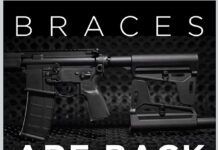The Houston test team recently had the opportunity to shoot heirloom-quality pistols from Nighthawk Custom and Masterpiece Arms. Our first test piece was the Nighthawk Custom TRS (Tactical Ready Series) in 9mm with a Commander-length (4.25-inch) slide and barrel. Base price on the pistol was $4399. Extras such as the Blackout treatment on the trigger, barrel, plug, and bushing, along with a sight upgrade to allow for the easy mounting of a red dot, brought total to a smooth $4900. By the way, you’re not going to find this pistol laying around at a discount house. Expect to order your custom piece directly from Nighthawk Custom, and we were pleased to see completion only 8 to 12 weeks out. The competition in this test was provided by a Masterpiece Arms DS9 Commander with many of the same types of features. Price on the DS9 was about $3150 decked out. As of this writing, lead time on the MPA was also 8 to 12 weeks.
Mark Stone formed Nighthawk Custom in 2004 using a cadre of experienced, talented gunsmiths from, primarily, Wilson Combat. Both organizations have done well in the intervening years, and both produce pistols well worth consideration, especially for those with means. Nighthawk offers a wide selection of top-tier 1911s along with some very nice revolvers and shotguns. They use a production method that’s summed up in the phrase “one gun, one gunsmith,” and all of the parts (except the alloy grip frame on our model) used on their 1911s are fully machined from 416 billet steel. They are intentionally made oversized so that each of the 46 pieces must be hand-fitted to that pistol by the gunsmith. That single ‘smith is assigned to that pistol, “owning” it through the entire production process and being responsible for the finished product. The results of that methodology on our test handgun were certainly impressive.
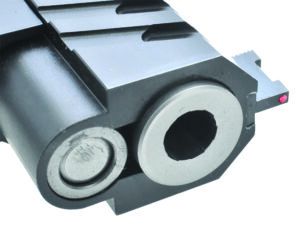
First opened in 2000 and purchased by Phil Cashin in 2008, Masterpiece Arms (MPA) has grown into one of the giants of the Precision Rifle Series and National Rifle League. Their chassis system is currently the most commonly selected unit by precision rifle competitors. We reviewed their MPA BA MPR Pro rifle in our April 2020 edition and declared it a Gun Tests Rifle of the Year in 2021. They have more recently directed some of their attention to the action pistol sports, particularly the USPSA (United States Practical Shooting Association). Somewhat similar in concept to PRS, USPSA pushes shooters to have gear that is accurate, fast, and dependable if they hope to be competitive. MPA jumped into this market in a big way with their DS-series pistols designed primarily for Open and Limited divisions. There is even a pistol tailor-made for IDPA (International Defensive Pistol Association with slightly different rules and different gear). Many of the same features that make a firearm a good choice for competition also make them eminently suitable for home or self-defense. We secured one of their DS9 Commander series, which is not specifically designed for competition, to see how it would hold up in our tests.
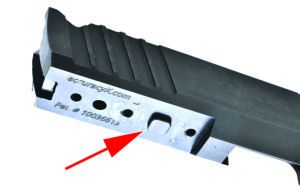
We used two different red dots to get the most out of these pistols. The first was the well-known Trijicon RMR ($540, MidwayUSA.com). The second was a Swampfox Optics Justice model ($240, SwampfoxOptics.com), which has also graced our pages before with great results. One of their other products saved our bacon. When we went to mount the Justice optic on the MPA, the screws were the right pitch but not the right length if we wanted to include to protective cover. Swampfox also offers a variety of replacement screws in the Ultimate Red Dot Screw Pack, $20, that solved the problem perfectly and we proceeded with our tests.
We did our shooting at American Shooting Centers in Houston. We tested for accuracy at 15 yards by shooting multiple five-shot groups from a well-sandbagged Caldwell Pistolero shooting rest assisted by a Mini DRC Fortune Cookie from Wiebad.com. We measured velocities with a LabRadar device using four different types of ammunition. First was 115-grain full-metal-jacket Remington Range ammo, along with Winchester White Box 115-grain FMJs. We included our standard match reload in the form of 147-grain FMJ bullets from Precision Delta, powered by Hodgdon Tite Group powder and CCI small pistol primers. Then we added in some Speer Gold Dot 124-grain +P self-defense jacketed hollow points. Here’s what we found:
Gun Tests Grade: A
$3150
Our DS9 came with a 4.25-inch bull barrel, made of 416R stainless steel. It was hand-fitted into a slide machined from a steel billet and then hand-lapped to the frame. The result is a very tight lockup that cycled every time we pressed the trigger and gave us outstanding accuracy. The bull barrel puts more weight on the front of the pistol, helping decrease muzzle flip a bit. The selection of that type of barrel system obviates the use of a bushing, leaving one less part to wear or break.
| Action Type | Semi-auto single action, hammer-fired |
| Overall Length | 8.0 in. |
| Overall Height | 6.0 in. |
| Maximum Width | 1.51 in. w/o magwell |
| Weight Unloaded | 1.98 lbs. |
| Weight Loaded | 2.49 lbs. |
| Slide Material | Carbon steel |
| Slide Retraction Effort | 11.7 lbs. |
| Receiver Material | Anodized aluminum |
| Finish | DLC/PVD coating/black nitride |
| Front Strap Height | 3.1 in. |
| Back Strap Height | 3.5 in. |
| Barrel Length | 4.25 in. |
| Grip Thickness (Maximum) | 1.33 in. |
| Grip Circumference | 6.0 in. |
| Magazines | Two 17-round |
| Rear Sight | Kensight Module, adj. for elevation and windage |
| Front Sight | Replaceable fiber optic |
| Sight Radius | 6.0 in. |
| Trigger Pull Weight | 3.1 lbs. |
| Trigger Span | 2.9 in. |
| Safety | Ambidextrous thumb |
| Warranty | Conditional lifetime for original purchaser |
| Telephone | (866) 803-0000 |
| Website | MasterpieceArms.com |
| Made In | U.S.A. |
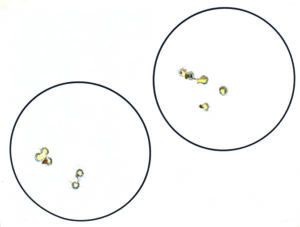
The slide has been milled with flats at the 10:30, 12, and 1:30 positions. Grasping grooves are located at the front and the rear of the slide. The grooves are cut to a greater depth at the front end at the locations where they would be cut all the way through the slide if this were a hybrid model. We always like to look at the parts ending at the rear of the slide and check for how well they have been finished. In this case, the extractor, the chassis, and the ejector flow properly in a continuous curve.
As did Nighthawk, MPA did an outstanding job with the gun’s sights. Their “Accuracy X Multi Sight Patented Modular Sight System” provides front and rear sights that can be removed as units. As it came, the front sight arrived as a 0.3-inch-tall blade with a red-fiber-optic insert. We liked the serrations on the trailing edge to help cut down on glare. The blade is mounted to a piece that slides into a dovetail from the muzzle. It is then further secured by a set screw and a nice dollop of blue Loctite. The rear sight reminds us of the old Bo-Mar sights we used a generation ago, but this one has some upgrades. The rear sight is also mounted on a piece of stock that screws into a milled flat on the rear of the slide. A single screw that needs to be removed is visible just in front of the rear sight. A second screw is located under the hinged rear sight. Remove both of those and the sight unit lifts off. Not only was it secured at multiple points, but MPA mills the slide to leave a recoil lug that the rear sights also sits on. This is very secure.
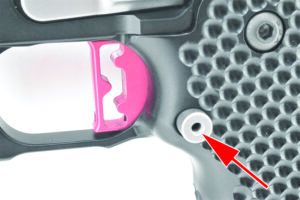
The chassis is a classic length, leaving just under an inch of the dust cover clear. A two-slot Picatinny rail is available for any accessories that need to be mounted. The chassis is made from aluminum alloy, and the grip is machined from same. MPA offers a choice of standard or aggressive texturing on the grip. We thought our standard type did just fine. The grip has a beveled magwell integral to the unit, and our sample had an additional add-on magwell secured to the base of the grip. The cross pin from the mainspring housing and a set screw kept things tight.
Almost everything on our DS9 was black except for the red trigger and controls that looked to be stainless steel still in the white. The magazine release is on the left side and is already drilled and tapped for an extension — just another indication of the competition origins of the pistol. The thumb safety is ambidextrous, snapping on and off with a very positive movement. The grip safety also offers options. The high-hand grip many shooters use can cause problems with the activation of the grip safety if the draw is not executed perfectly. Our sample of the DS9 came with a deactivated grip safety, lessening the fear of that bad grip. But the choice is yours as to whether you want it to work or not. We’ve railed about this anachronistic safety for eons and loved being given the choice.
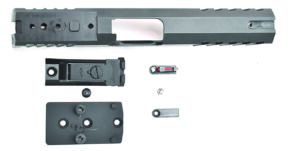
Most of the internal parts are machined by MPA. They are all machined somewhere in the U.S. We saw that they used the excellent Koenig hammer, sear, and disconnector — major factors contributing to a crisp 3-pound trigger. The red trigger was just a bit sexy, we thought, but the shooter has a choice here as well as to which color he prefers. MPA did one more thing with the ignition system we really liked — they reverted to the Series 70-style firing pin. No more firing pin safety. No more linkages to stiffen up a good trigger job.
The MPA DS9 won our speed tests with an average time for both tests of 1.693 seconds versus 1.815 for our Nighthawk. That is just over a tenth of a second difference across five shots and a draw. We would hate to live on the difference, but win the DS9 did. The group shooting trophy also went to the MPA with an average of 1.08 versus 1.14 inches on the Nighthawk. Six hundredths of an inch could be explained away by how we read the caliper. Neither comment is meant to lessen what the MPA accomplished, but, instead, we including it to highlight how well both performed.
Our Team Said: Note that the MPA’s grip frame is slightly bigger around than the Nighthawk and the magwell is a bit wider. We are going to give the Nighthawk credit for a marginally slimmer pistol that’s perhaps a tiny bit easier to conceal, and we liked the Nighthawk’s very stylish all-black finish. We have shot expensive defensive and competition pistols many times in the past. These two are the equal of anything we have ever handled. We think the DS9 Commander would make an outstanding choice for self-defense while it shows the pedigree of an excellent competition pistol. Features such as the optional, deactivated grip safety as well as the drilled and tapped magazine release are nice touches.
Both the DS9 and the Nighthawk require a serious cash outlay, but you will notice the difference every time you press the trigger. And talk about a BBQ gun. We would be happy with either one.
Drill Data (5x5x5)
Process: Fire five shots from low ready at a 5-inch circle placed at 5 yards. Numbers are averages for two repetitions.| Pistol | Time to First Shot (seconds) | Split Average (seconds) | Total Time (seconds) |
|---|---|---|---|
| Nighthawk | 0.93 | 0.208 | 1.76 |
| Masterpiece Arms | 0.98 | 0.183 | 1.805 |
Drill Data (5x8x7)
Process: Fire five shots from low ready at an 8-inch circle at 7 yards. Numbers are averages for three repetitions.| Pistol | Time to First Shot (seconds) | Split Average (seconds) | Total Time (seconds) |
|---|---|---|---|
| Nighthawk | 1.04 | 0.208 | 1.87 |
| Masterpiece Arms | 0.805 | 0.194 | 1.58 |
Range Data
All testing was done at American Shooting Centers (AmericanShootingCenters.com) in Houston. We fired multiple five-shot groups at 15 yards. All shots for group were done from a well-sandbagged Caldwell Pistol Rest from MidwayUSA (517357, $28) and aided by a mini-DRC Fortune Cookie bag from Wiebad.com ($65, #MINIFC). We measured velocities with a LabRadar device (MyLabRadar.com, $559).
| Remington Range 115-grain FMJ | Nighthawk Custom Tactical Ready Series | Masterpiece Arms DS9 Commander |
| Average Velocity | 1115 fps | 1124 fps |
| Muzzle Energy | 318 ft.-lbs. | 323 ft.-lbs. |
| Average Group | 1.34 in. | 1.13 in. |
| Best Group | 1.20 in. | 1.08 in. |
| Winchester 115-grain FMJ | Nighthawk Custom Tactical Ready Series | Masterpiece Arms DS9 Commander |
| Average Velocity | 1137 fps | 1179 fps |
| Muzzle Energy | 330 ft.-lbs. | 355 ft.-lbs. |
| Average Group | 1.14 in. | 1.15 in. |
| Best Group | 1.11 in. | 0.99 in. |
| Precision Delta 147-grain FMJ | Nighthawk Custom Tactical Ready Series | Masterpiece Arms DS9 Commander |
| Average Velocity | 866 fps | 952 fps |
| Muzzle Energy | 244 ft.-lbs. | 296 ft.-lbs. |
| Average Group | 1.21 in. | 1.19 in. |
| Best Group | 1.13 in. | 0.83 in. |
| Speer Gold Dot 124-grain +P | Nighthawk Custom Tactical Ready Series | Masterpiece Arms DS9 Commander |
| Average Velocity | 1160 fps | 1166 fps |
| Muzzle Energy | 371 ft.-lbs. | 374 ft.-lbs. |
| Average Group | 0.88 in. | 0.85 in. |
| Best Group | 0.73 in. | 0.70 in. |


























